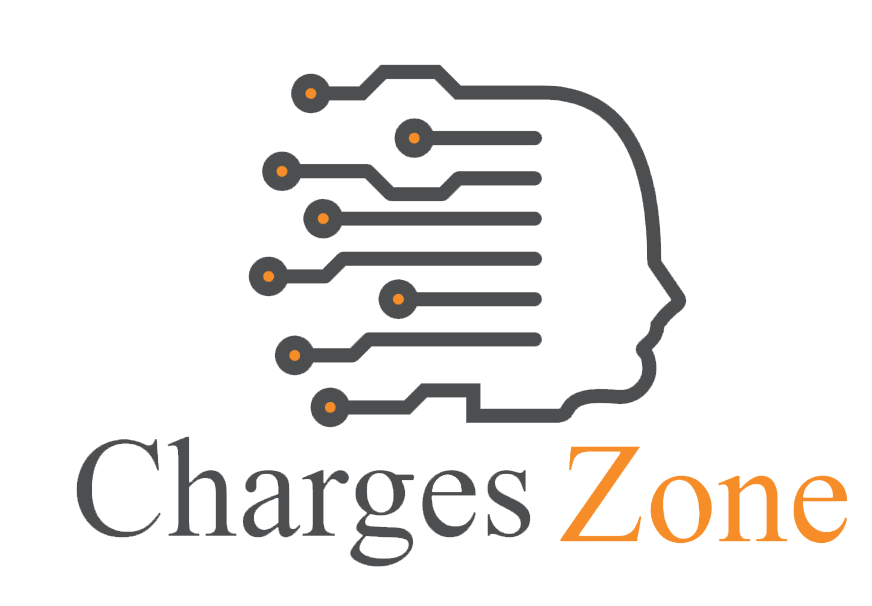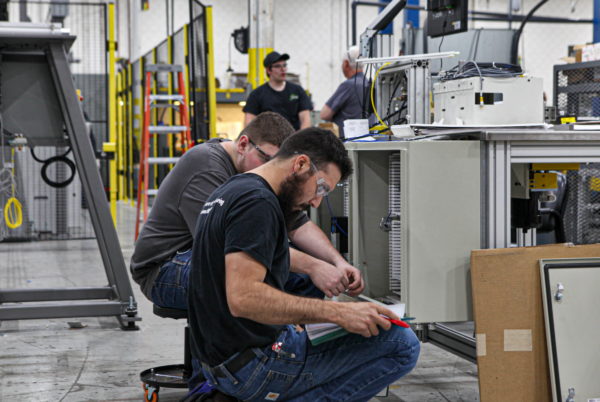The Impact of Dynamic Billboards on Modern Advertising
The world of advertising is constantly evolving, and with the rise of digital technology, traditional billboards have transformed into dynamic and captivating displays that capture attention like never before. Dynamic billboards, also known as digital or LED billboards, have revolutionized the advertising landscape, offering advertisers new possibilities to engage and connect with their target audiences. These high-tech displays have become prominent fixtures in urban areas, bustling highways, and prime advertising locations, commanding attention with their vibrant colors, eye-catching animations, and real-time content updates.
In this blog, we will explore the impact of dynamic billboards on modern advertising. We will delve into the advantages they bring to marketers, the ways they have transformed the traditional advertising industry, and the unique opportunities they present for creative storytelling and brand messaging. From their ability to deliver dynamic and personalized content to their potential for interactivity and real-time updates, dynamic billboards have revolutionized the way brands communicate with consumers.
We will examine how dynamic billboards have redefined the concept of out-of-home advertising, transforming static images into captivating experiences that leave a lasting impression on viewers. With their ability to display multiple ads in rotation, target specific demographics, and adapt to different time slots or events, dynamic billboards offer advertisers unprecedented flexibility and efficiency in reaching their desired audiences.
Furthermore, we will explore the technological advancements that have made dynamic billboards possible, such as high-resolution LED displays, advanced content management systems, and data-driven targeting capabilities. We will discuss the impact of these innovations on the advertising industry and how they have opened up new avenues for creativity and audience engagement.
Additionally, we will delve into the challenges and considerations associated with dynamic billboard advertising, such as content regulations, viewer distraction, and the need for strategic placement to maximize visibility and impact. Understanding these factors is essential for advertisers looking to leverage dynamic billboards effectively and ethically.
Join us on this exploration of the impact of dynamic billboards on modern advertising. Discover how these cutting-edge displays have transformed the way brands connect with consumers, creating immersive and engaging experiences in the urban landscape. From their ability to command attention to their potential for real-time targeting and storytelling, dynamic billboards have become a powerful tool in the marketer’s arsenal, shaping the future of advertising as we know it.
Captivating Attention: The Power of Visual Impact
In the modern advertising landscape, capturing and holding the attention of consumers has become increasingly challenging. With the rise of digital distractions and shortened attention spans, advertisers are seeking innovative ways to break through the noise and make a lasting impression. Dynamic billboards have emerged as a powerful tool in this endeavor, harnessing the power of visual impact to captivate audiences.
Unlike traditional static billboards, dynamic billboards utilize high-resolution LED displays that offer vibrant colors, crisp imagery, and eye-catching animations. These visually striking displays have an immediate impact on viewers, drawing their attention and engaging them in a way that static images cannot. The dynamic nature of these billboards allows for creative and attention-grabbing transitions, motion graphics, and video content, creating a multisensory experience that is hard to ignore.
The size and strategic placement of dynamic billboards further contribute to their ability to captivate attention. Placed in high-traffic areas, such as busy intersections, highways, or popular urban locations, these billboards command the attention of pedestrians, commuters, and passersby. Their large format and prominent positioning make them unmissable, ensuring that the message gets noticed and remembered.
Additionally, dynamic billboards have the advantage of flexibility and versatility in their content delivery. Advertisers can display a series of ads in rotation, keeping the content fresh and engaging. They can also leverage the dynamic capabilities of these billboards to tell stories or create narratives that unfold over time, building intrigue and sustaining interest. By employing visually stunning graphics, captivating animations, and even interactive elements, advertisers can create memorable experiences that leave a lasting impact on viewers.
The impact of dynamic billboards on modern advertising extends beyond capturing attention. They also enhance brand recognition and recall. With their visually striking nature, these billboards help brands stand out from the competition, increasing their visibility and making a strong impression in the minds of consumers. The dynamic and captivating nature of the content displayed on these billboards reinforces brand messaging, ensuring that it resonates with the target audience and remains memorable.
In conclusion, dynamic billboards have revolutionized modern advertising by harnessing the power of visual impact to captivate attention. With their vibrant colors, eye-catching animations, and strategic placement, these billboards stand out in the urban landscape and engage viewers in a way that traditional static billboards cannot. The ability to deliver visually stunning and dynamic content allows advertisers to create immersive experiences that leave a lasting impression on consumers. The captivating nature of dynamic billboards enhances brand recognition and recall, making them a valuable tool in the marketer’s arsenal to break through the clutter and connect with audiences in a meaningful way.
Personalized Messaging: Tailoring Ads to Target Audiences
In the era of digital advertising, personalization has become a key strategy for marketers to effectively engage with their target audiences. Dynamic billboards have transformed traditional outdoor advertising by offering the opportunity to tailor messages and content to specific demographics, locations, or even real-time events.
One of the significant advantages of dynamic billboards is their ability to display targeted messaging based on the audience present in a particular area. Using advanced data analytics and audience segmentation techniques, advertisers can leverage real-time data to deliver relevant and personalized content to the viewers. For example, a dynamic billboard in a shopping district can display ads for nearby retail stores, showcasing specific products or promotions that are likely to appeal to the local audience.
Moreover, dynamic billboards allow for dynamic creative optimization, enabling advertisers to test and refine their messaging in real-time. By analyzing audience response and engagement metrics, advertisers can make data-driven decisions to optimize their ads and ensure they resonate with their target audience. This flexibility allows for iterative improvements and the ability to adapt campaigns based on the changing needs and preferences of the audience.
Dynamic billboards also provide opportunities for contextual advertising. By integrating real-time data feeds such as weather updates, social media trends, or event schedules, advertisers can deliver timely and relevant messages that align with the current context. For example, a dynamic billboard near a sports stadium can display ads related to the upcoming game or promotions from local sports bars, maximizing the impact of the advertisement by capitalizing on the heightened interest and enthusiasm of the audience during that specific event.
Additionally, dynamic billboards enable advertisers to engage audiences through interactive elements. By incorporating technologies such as QR codes, NFC tags, or augmented reality, viewers can actively engage with the ad content, accessing additional information, participating in contests, or even making purchases directly from the billboard. This level of interactivity fosters a deeper connection between the audience and the brand, enhancing the overall effectiveness of the advertising campaign.
The ability to personalize messaging and deliver targeted content through dynamic billboards has transformed outdoor advertising into a highly effective and relevant medium. By tailoring messages to specific demographics, leveraging real-time data, and incorporating interactive elements, advertisers can create a more personalized and engaging experience for the audience. This level of customization not only increases the likelihood of capturing attention but also enhances brand perception and drives higher engagement and conversions.
In conclusion, dynamic billboards offer advertisers the opportunity to personalize messaging and deliver tailored content to target audiences. By leveraging real-time data, advertisers can create relevant and engaging ads that resonate with viewers. The flexibility of dynamic billboards allows for iterative improvements and optimization based on audience response, ensuring the delivery of impactful messages. Additionally, the integration of interactive elements further enhances audience engagement and creates a more immersive brand experience. The ability to personalize content through dynamic billboards has transformed outdoor advertising, enabling advertisers to connect with audiences on a deeper level and achieve higher levels of campaign success.
Real-Time Updates: Keeping Content Fresh and Relevant
One of the key advantages of dynamic billboards in modern advertising is their ability to deliver real-time updates, ensuring that the displayed content remains fresh, relevant, and responsive to changing circumstances. This dynamic capability allows advertisers to maintain a competitive edge in a fast-paced and ever-evolving marketplace.
Dynamic billboards can be seamlessly connected to content management systems that enable remote control and instant updates. Advertisers can easily modify and change the displayed content within minutes, eliminating the need for costly and time-consuming manual replacements. This real-time update feature is particularly valuable for time-sensitive promotions, event-based campaigns, or rapidly changing market conditions.
By leveraging real-time updates, advertisers can keep their messaging current and adapt to immediate opportunities. For example, during major sporting events, advertisers can quickly update their ads to reflect game scores, highlight standout players, or offer limited-time promotions related to the event. This relevance and timeliness not only capture the attention of the audience but also create a sense of urgency and excitement, driving immediate engagement and response.
Furthermore, dynamic billboards allow advertisers to synchronize their messaging with other marketing channels, such as social media or digital campaigns. By integrating real-time social media feeds, advertisers can display user-generated content, hashtags, or live updates on the billboard. This integration not only encourages audience participation but also extends the reach of the campaign beyond the physical billboard, creating a cohesive and immersive brand experience across various touchpoints.
The real-time updates of dynamic billboards also facilitate localized advertising strategies. Advertisers can customize their messaging based on specific locations, demographics, or other relevant data points. For instance, a retailer with multiple store locations can dynamically update the content of each billboard to display store-specific promotions, pricing, or inventory information based on the proximity to the viewer. This localization enhances the relevance of the messaging and increases the likelihood of driving foot traffic to specific stores.
Moreover, real-time updates allow for A/B testing and data-driven optimization. Advertisers can experiment with different variations of their content, measure audience response, and make data-informed decisions to optimize the effectiveness of their campaigns. By analyzing metrics such as engagement rates, conversion rates, or audience demographics, advertisers can fine-tune their messaging, visuals, or calls-to-action to maximize impact and return on investment.
In conclusion, the real-time update capability of dynamic billboards provides advertisers with a significant advantage in keeping their content fresh, relevant, and responsive to changing circumstances. The ability to quickly modify and adapt messaging in real-time ensures that advertisers can leverage immediate opportunities, stay in sync with other marketing channels, and deliver localized and personalized content. The integration of real-time social media feeds and data-driven optimization further enhances the effectiveness of dynamic billboards. By harnessing the power of real-time updates, advertisers can maintain a competitive edge and effectively engage their target audiences in a fast-paced and ever-evolving advertising landscape.
Measurable Impact: Tracking Success with Data and Analytics
One of the significant advantages of dynamic billboards in modern advertising is the ability to measure their impact with data and analytics. Unlike traditional static billboards, which offer limited insights into their effectiveness, dynamic billboards provide advertisers with valuable metrics and analytics that enable them to track and evaluate the success of their campaigns.
With dynamic billboards, advertisers can leverage various measurement tools to gather data on audience impressions, engagement rates, and conversion metrics. This data allows advertisers to understand how their ads are performing, make data-driven decisions, and optimize their campaigns for better results. By accessing real-time analytics, advertisers can assess the effectiveness of their messaging, visuals, and calls-to-action, and make necessary adjustments to improve campaign performance.
One of the key metrics that dynamic billboards can provide is audience impression data. Advertisers can measure the number of people who have seen their ads, allowing them to gauge the reach and exposure of their campaigns. This information is invaluable in determining the effectiveness of the billboard’s placement and evaluating the overall visibility of the advertisement.
Engagement rates are another crucial metric that dynamic billboards offer. By tracking audience interaction with the displayed content, advertisers can gain insights into how viewers are engaging with their ads. Metrics such as dwell time, interaction with interactive elements, or social media engagement generated from the billboard can provide valuable insights into the level of audience engagement and the effectiveness of the messaging in capturing attention and driving interest.
Conversion metrics play a significant role in measuring the impact of dynamic billboards on driving desired actions. Advertisers can track specific actions taken by viewers as a result of seeing the billboard, such as website visits, app downloads, or purchases. By correlating these conversion metrics with the timing of the billboard display or specific messaging elements, advertisers can assess the direct impact of the billboard on driving desired customer actions.
Furthermore, dynamic billboards can integrate with advanced technologies such as computer vision or facial recognition to gather demographic and audience segmentation data. This data provides insights into the demographics, age ranges, gender, or other relevant attributes of the viewers. Advertisers can leverage this information to refine their targeting strategies, ensure that their ads are reaching the intended audience, and customize their messaging accordingly.
The availability of these data and analytics not only enables advertisers to track the success of their campaigns but also fosters ongoing optimization and improvement. By analyzing the collected data, advertisers can identify trends, understand audience preferences, and fine-tune their strategies to achieve better results. The ability to measure the impact of dynamic billboards provides advertisers with valuable insights and the opportunity to refine their campaigns for maximum effectiveness and return on investment.
In conclusion, dynamic billboards offer advertisers the advantage of measuring the impact of their campaigns through data and analytics. Audience impression data, engagement rates, conversion metrics, and demographic insights enable advertisers to evaluate the success of their messaging, make data-driven decisions, and optimize their campaigns for better results. The ability to track and measure the impact of dynamic billboards empowers advertisers with valuable insights to refine their strategies and achieve higher levels of campaign success. By leveraging data and analytics, advertisers can make informed decisions, maximize their return on investment, and drive meaningful connections with their target audiences.








